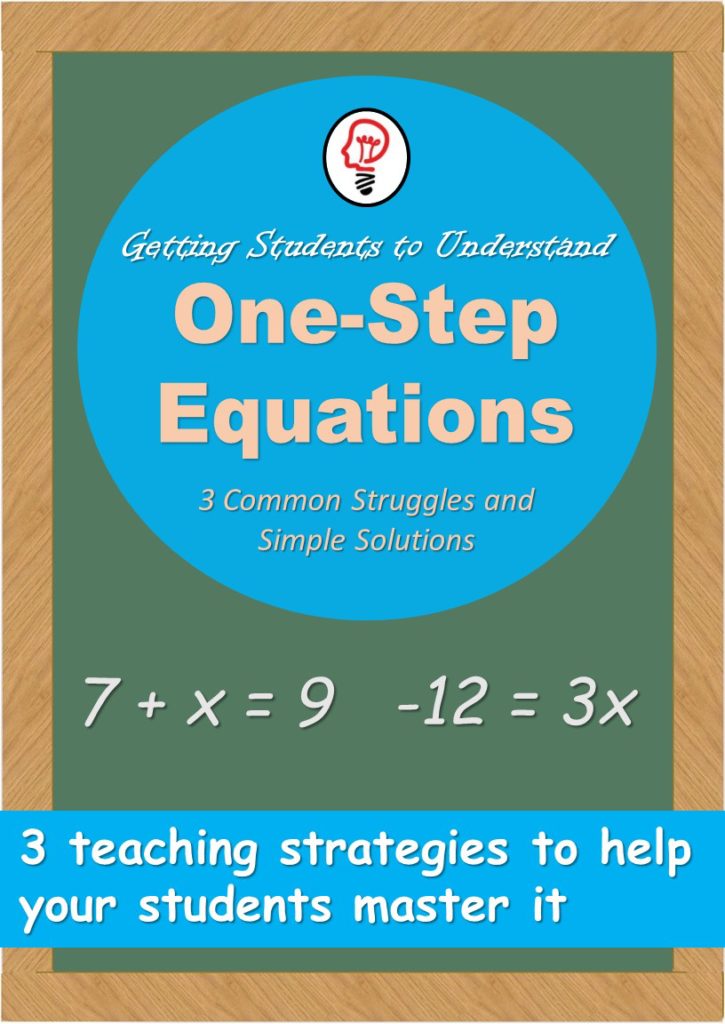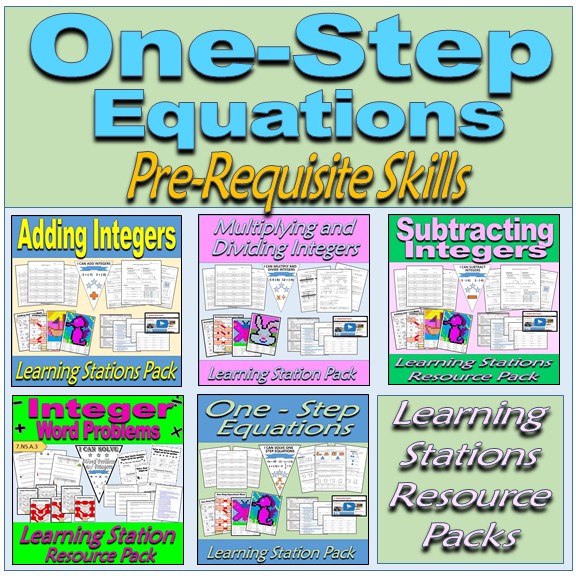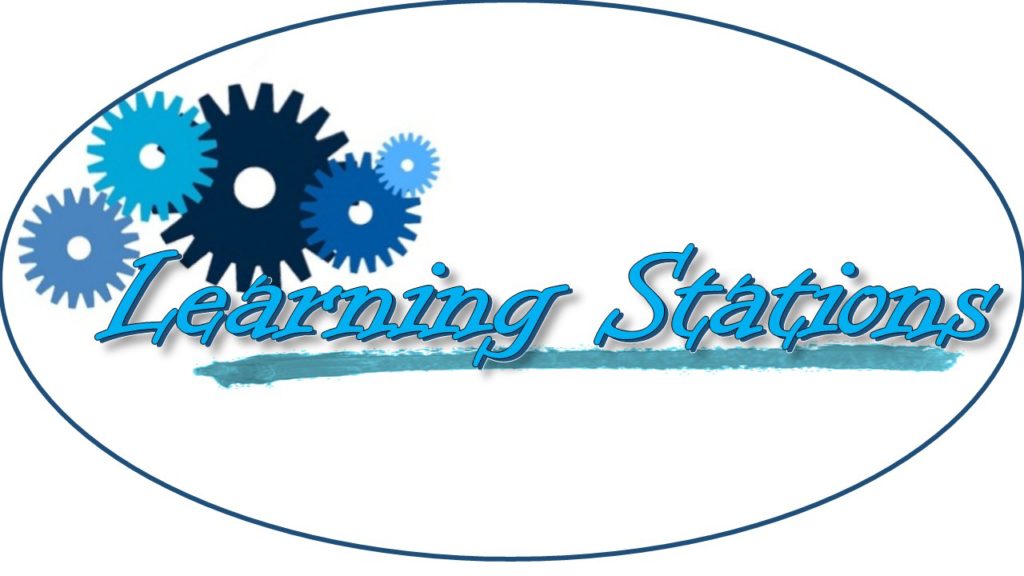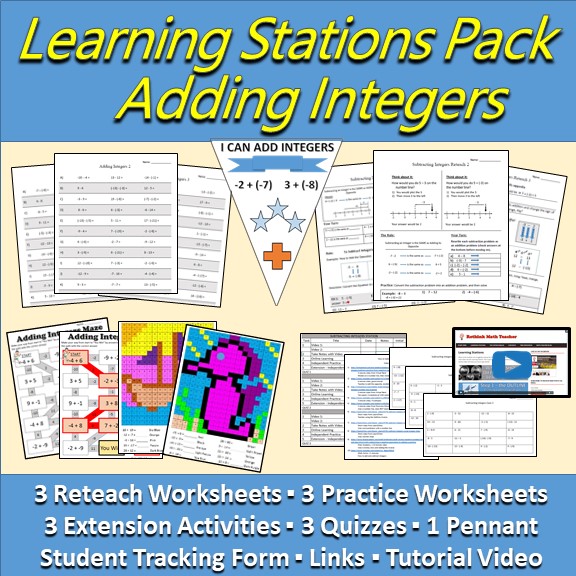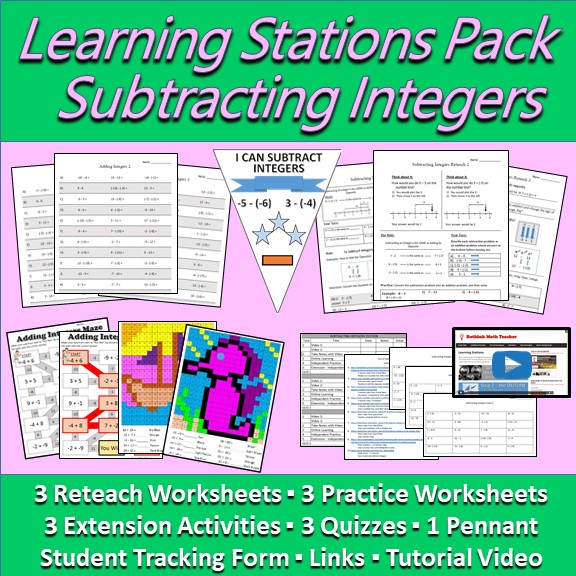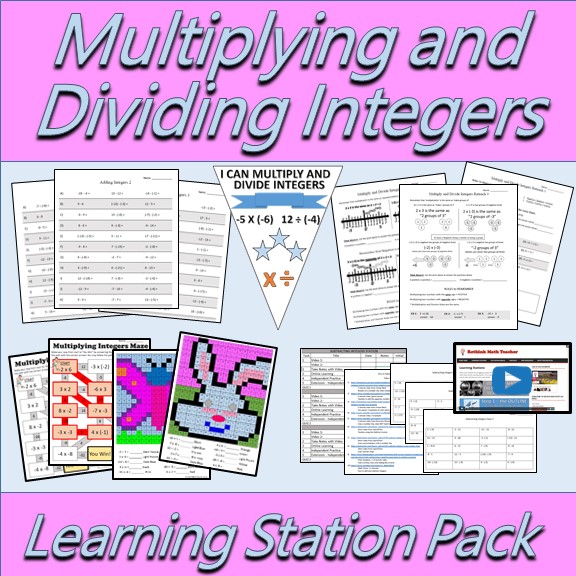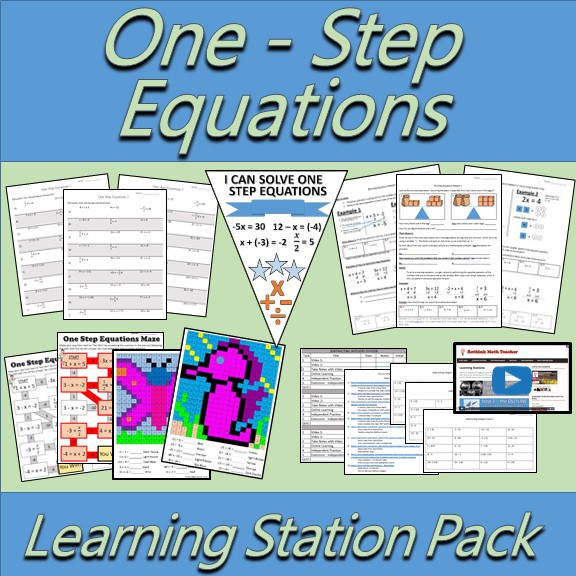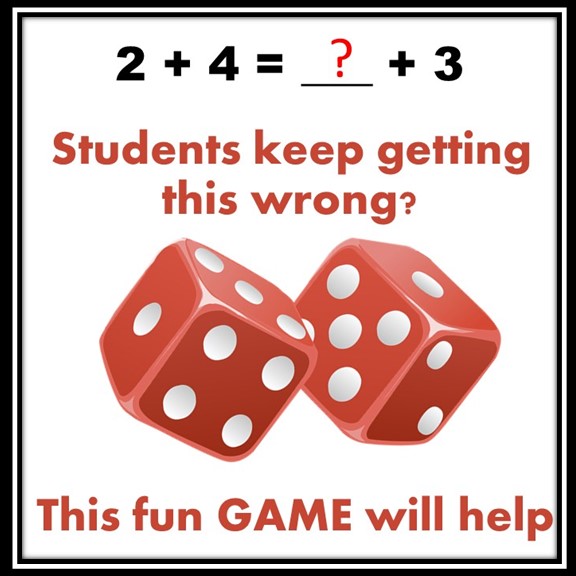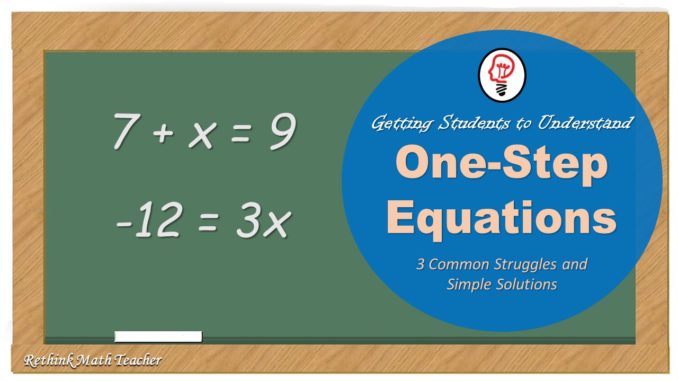
Teaching One-Step Equations is an important, foundational skill. Yet we often fail to teach it properly to our students. This incomplete comprehension of the skill causes our students to struggle as the rigor increases or as you move on to more difficult math concepts that build upon one-step equations.
The Issues and Solutions
1. Not Showing Work
As good math teachers, start by exposing the students to simpler problems to teach the technique, and then we increase the rigor.
x – 1 = 8 -12 = 3x
The issue this causes is that most of your students are smart enough to figure out the solution without doing the algebra needed to solve. Thus, when the problems get harder, the students do not have the tools to be able to solve the problem – then you must ‘reteach’ them the skill (though, it’s not really a reteach, since they never actually learned it.)
One easy way to combat this issue it to make your students show the work on the easier problems. Explain to them that you know that they know the answer without the work – but the purpose of this activity is not to see if they know what minus 1 equals 8, the purpose of this activity is to learn how to solve a one-step equation. I often remind my students as they are learning the skill that the problems will get harder, so learn the steps now or you won’t be able to do the work later.
Another easy method to help deter students from skipping the process of showing their work (or not learning how to properly do the steps) is to expose them to the harder questions at the beginning. This way your students understand why they need to learn how to show their work.
2. Lack of prerequisite skills
If your students did not master adding integers, subtracting integers, or multiplying and dividing integers, they will not be able to solve one-step equations.
Often, one-step equations have fractions or decimals involved, so your students must also know how to perform these skills as well.
Since these prerequisite skills will hinder my students from mastering this concept, I remediate my students based on what skill they have not mastered; ”skills based remediation.”
Since different students will need remediation on different skills, I build a learning station for each skill that reteaches the math concept, and then exposes the students to lots of practice with immediate feedback. We do station work every day, and my students stay in the station of the skill that they need remediation on until they master that skill. Then I progress them to the next, and then the next, until they can solve one-step equations.
Premade Learning Stations
3. Not understanding the equal sign
This may be a shocker for many teachers. It was for me when I first started witnessing it with my students. But many of our students don’t understand what the equal sign means.
The equal sign shows that the left side of the equation and the right side of the equation have the same value; they’re balanced. This is why whatever we do to one side of the equation, we must do to the other side – to keep them balanced.
Because students don’t understand this, they fail to perform the same operation to both sides of the equal sign.
You may have seen students perform the same operation to one side of the equal sign, twice! Or they will get confused when the variable is to the right of the equal sign (because they think that the equal sign means “solve”).
How many times have you showed students how to check their work on a one-step equation and they don’t understand why you’re doing it. I was always surprised when I’d do the ‘check your work’ on the board, show that both sides of the same resulted in the same answer, “ 8 = 8 “ but when I asked my students if ‘eight equals eight’ they didn’t know. This was because they didn’t understand what an equal sign is.
Students think the equal sign means “solve.” So when I ask if “ 8=8?” They read it, ‘8 solve 8,’ which of course makes no sense.
The first thing you should do to combat this issue is teach your students what the equal sign means. Teach it every day, several times a day. Ask them as they’re doing their work, entering the room, or when they ask to go to the bathroom, “What does the equal sign mean?” Engrain it into their thinking, “the equal sign means both sides of the equation have the same value.” Obviously you can use a different vocabulary to convey the same message,
The second thing you must do is make sure that you are exposing your students to problems that are not in the traditional equation format.
The traditional formatting of an equation is: 7 + x = 9
So rearrange it: x + 7 = 9 and 9 = x + 7
To go one step further, you can even show the traditional formatting of the equation to your students, and then ask them to tell it to you in a different setup.
The final method I recommend to combat this misunderstanding of the equal sign is a math game that helps students understand this concept and think about it critically. To play, you need two dice for every group of students and a piece of paper.
The game is a lot of fun, but it also helps students better understand how the equal sign works.
Want to learn more about using learning stations in your class? Click here
